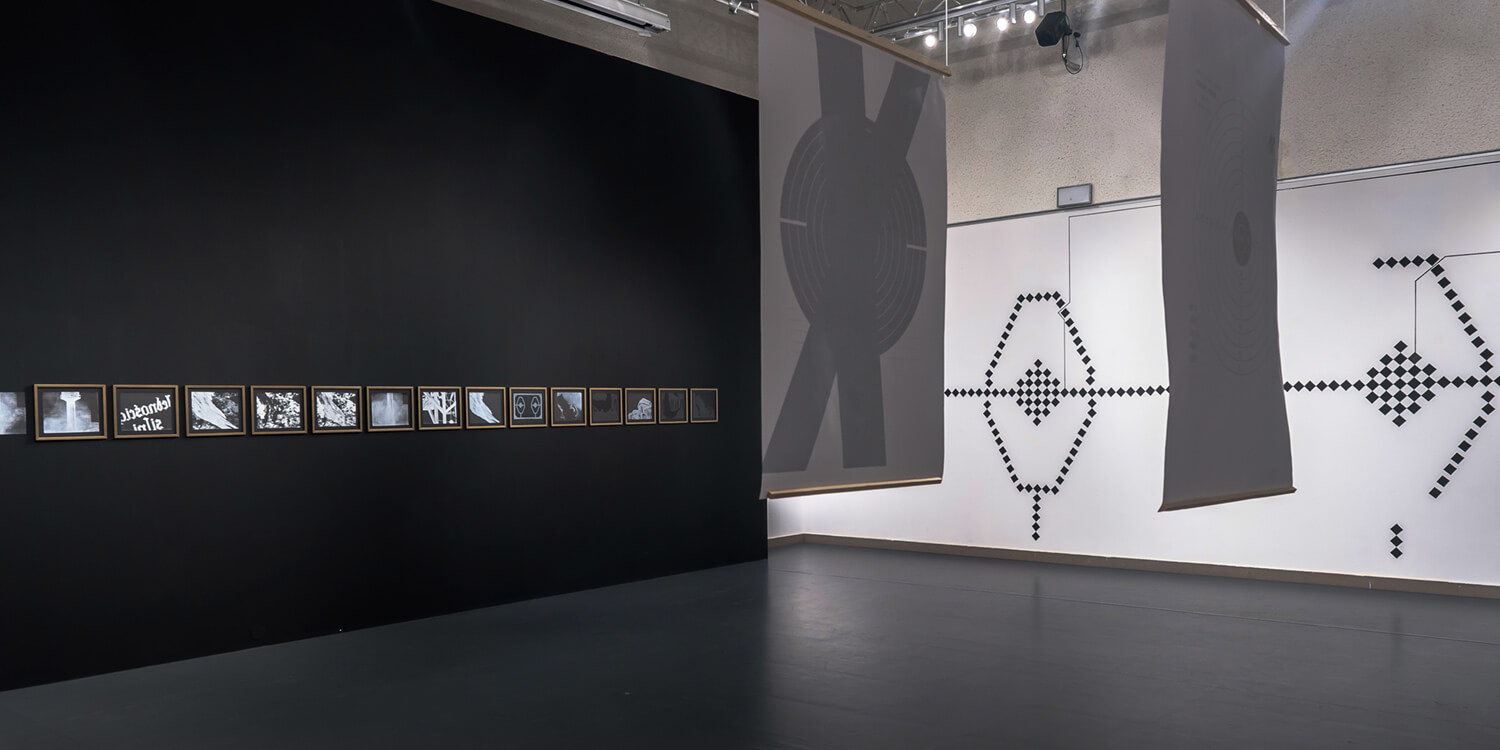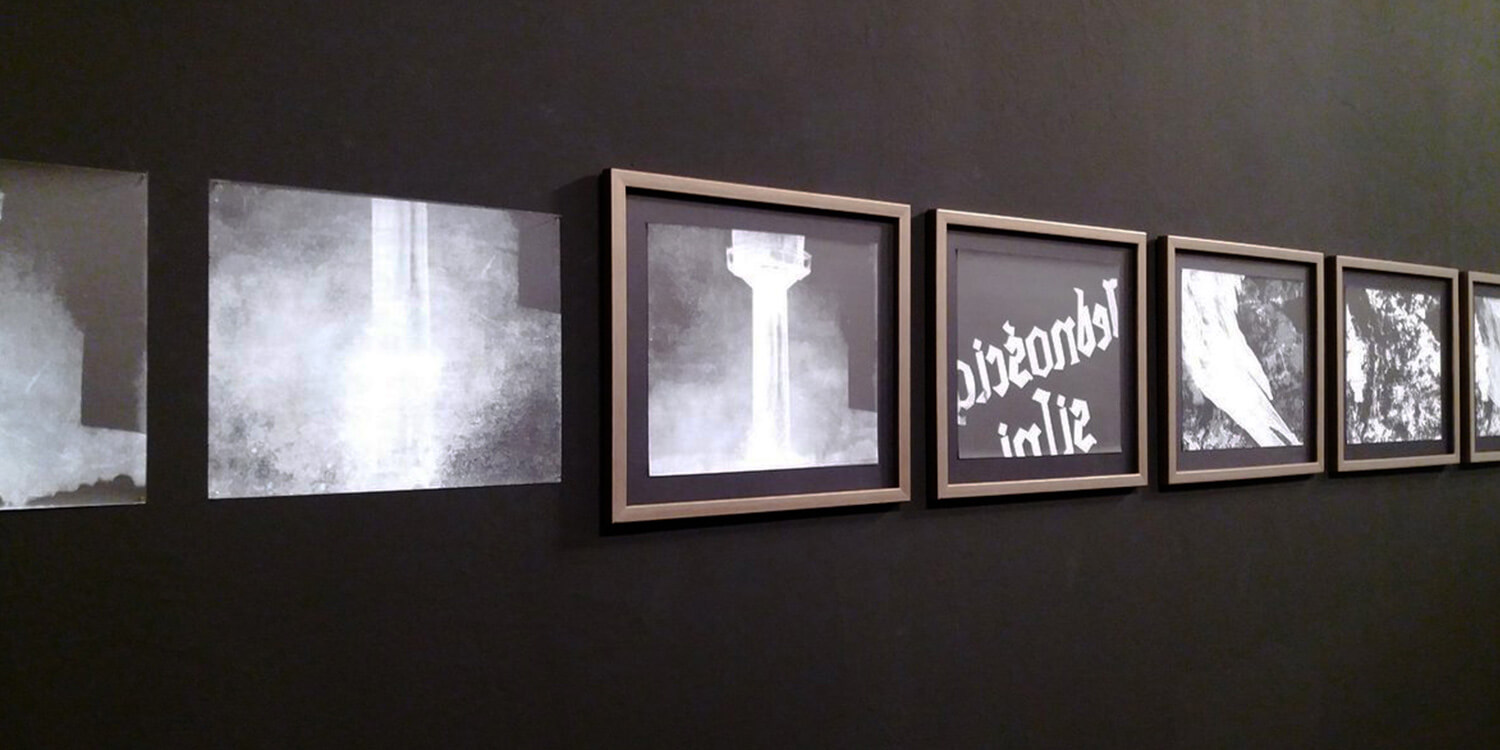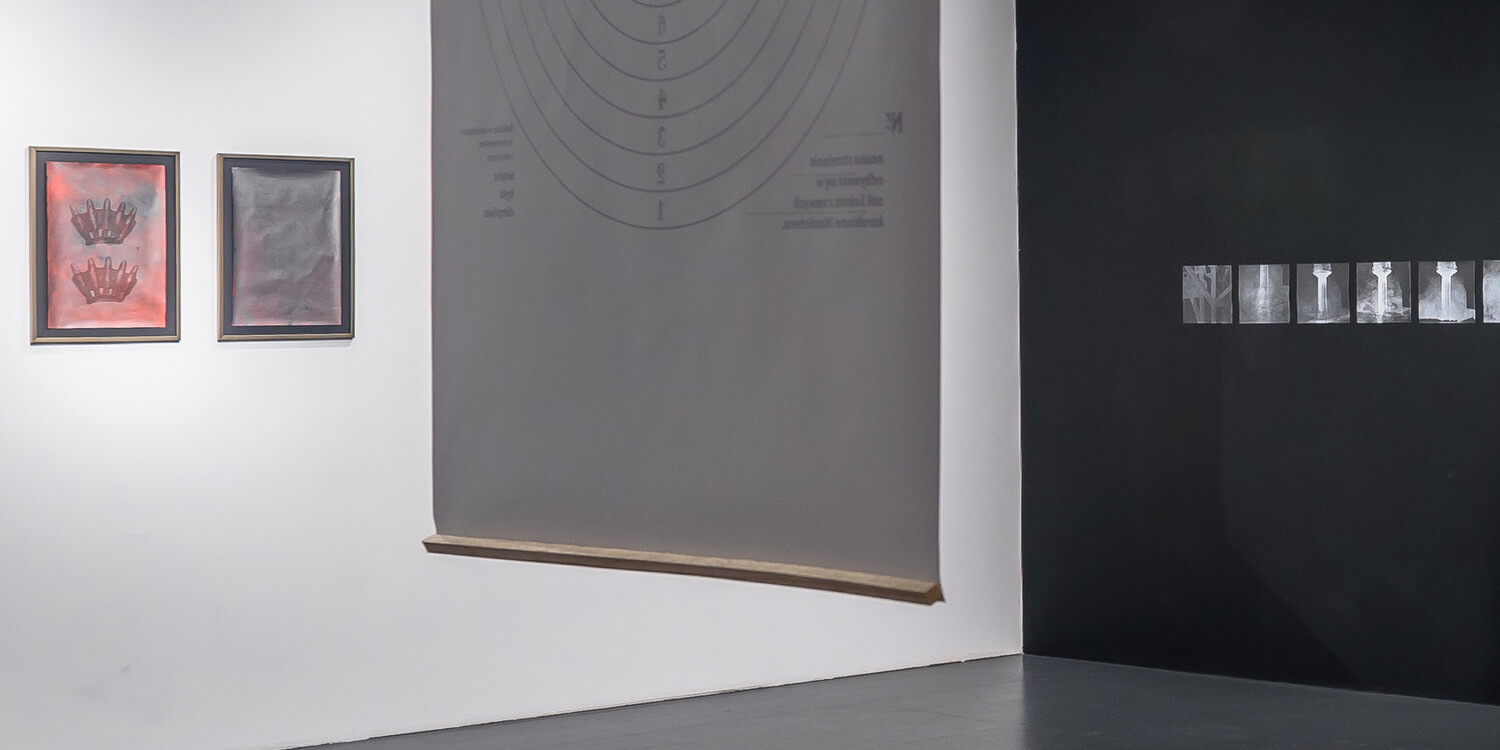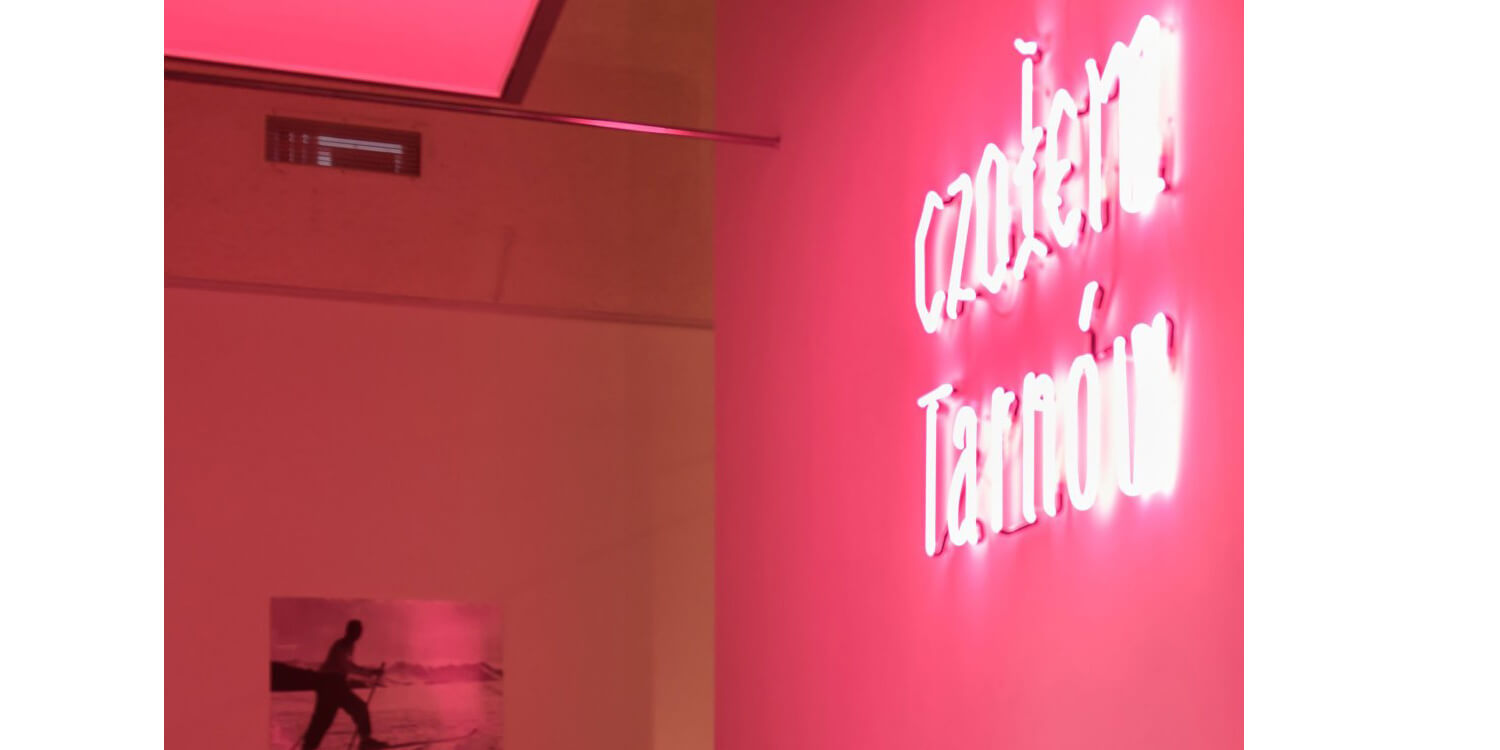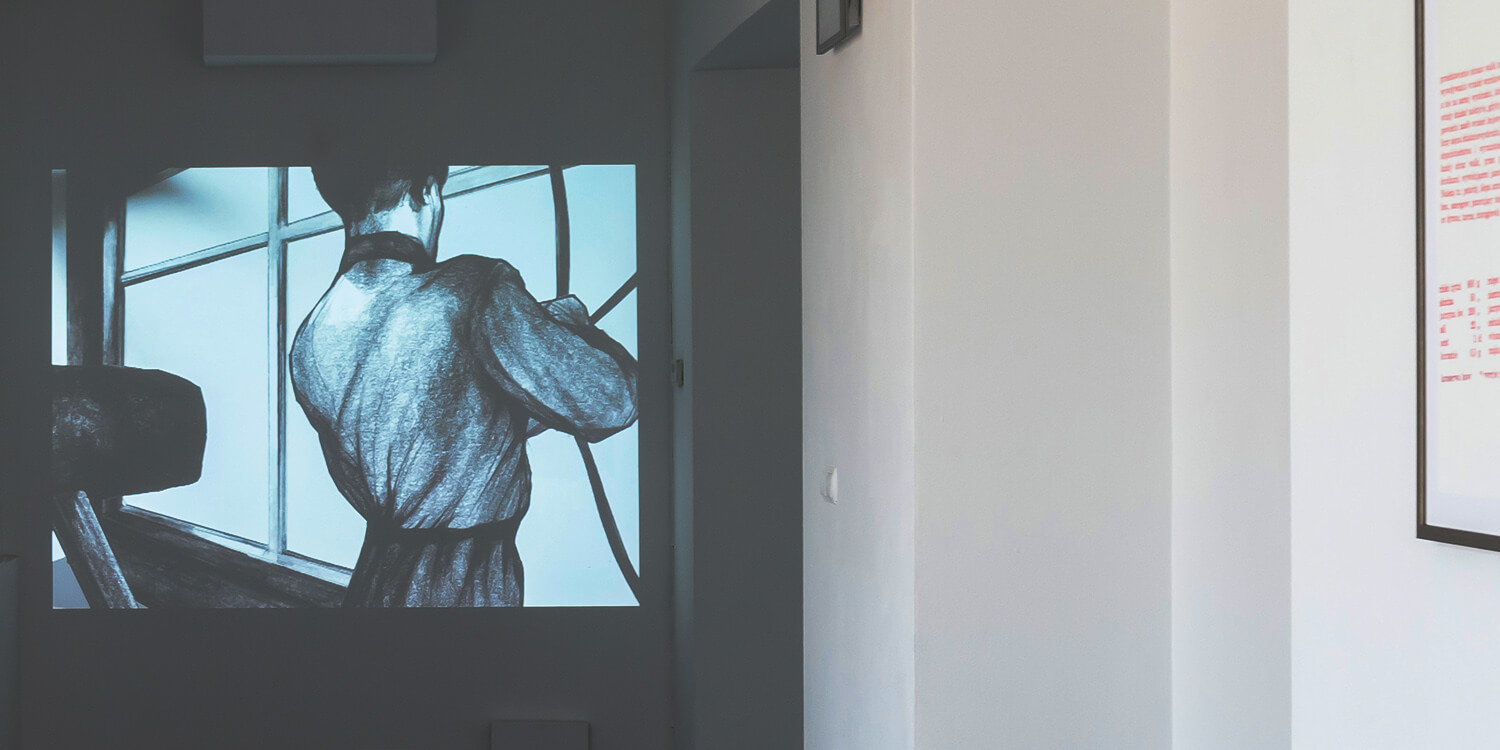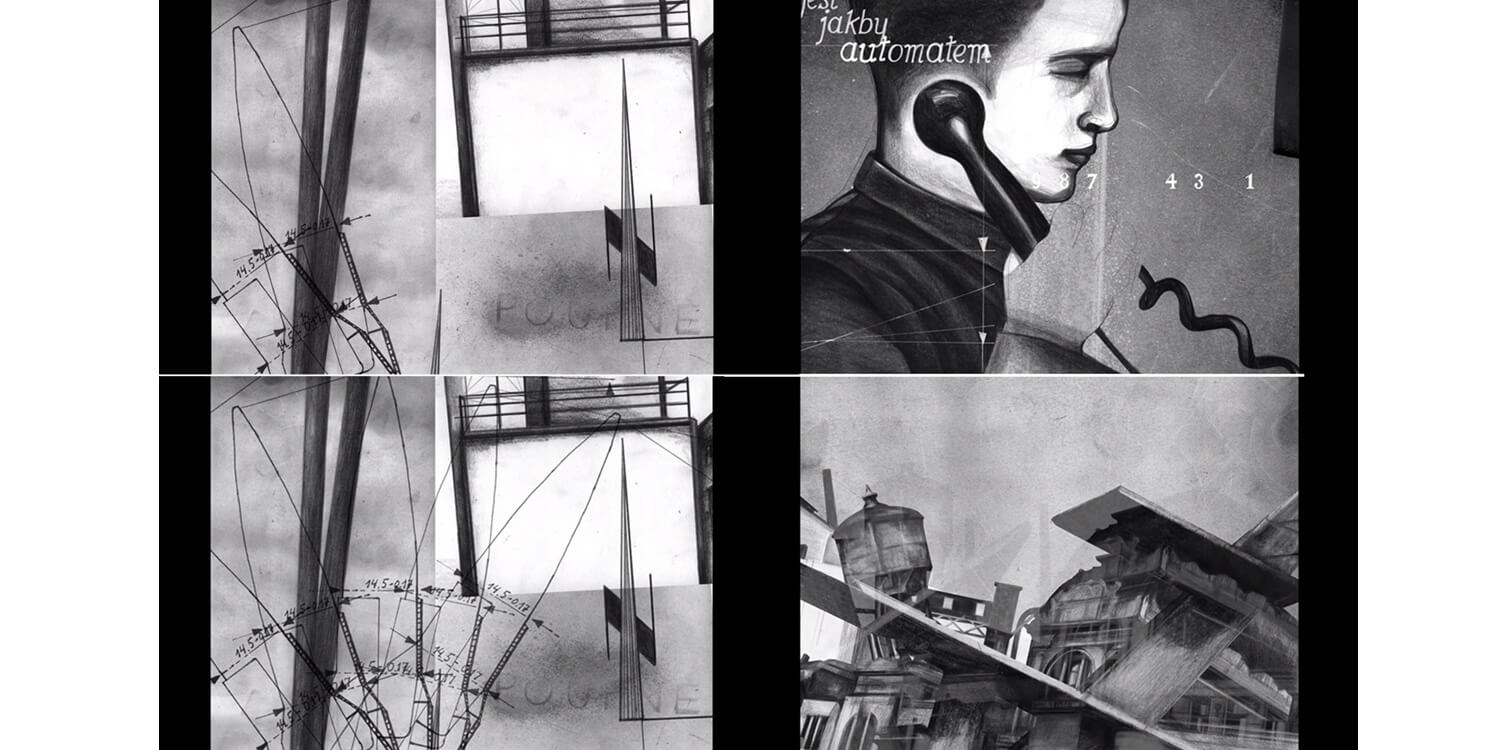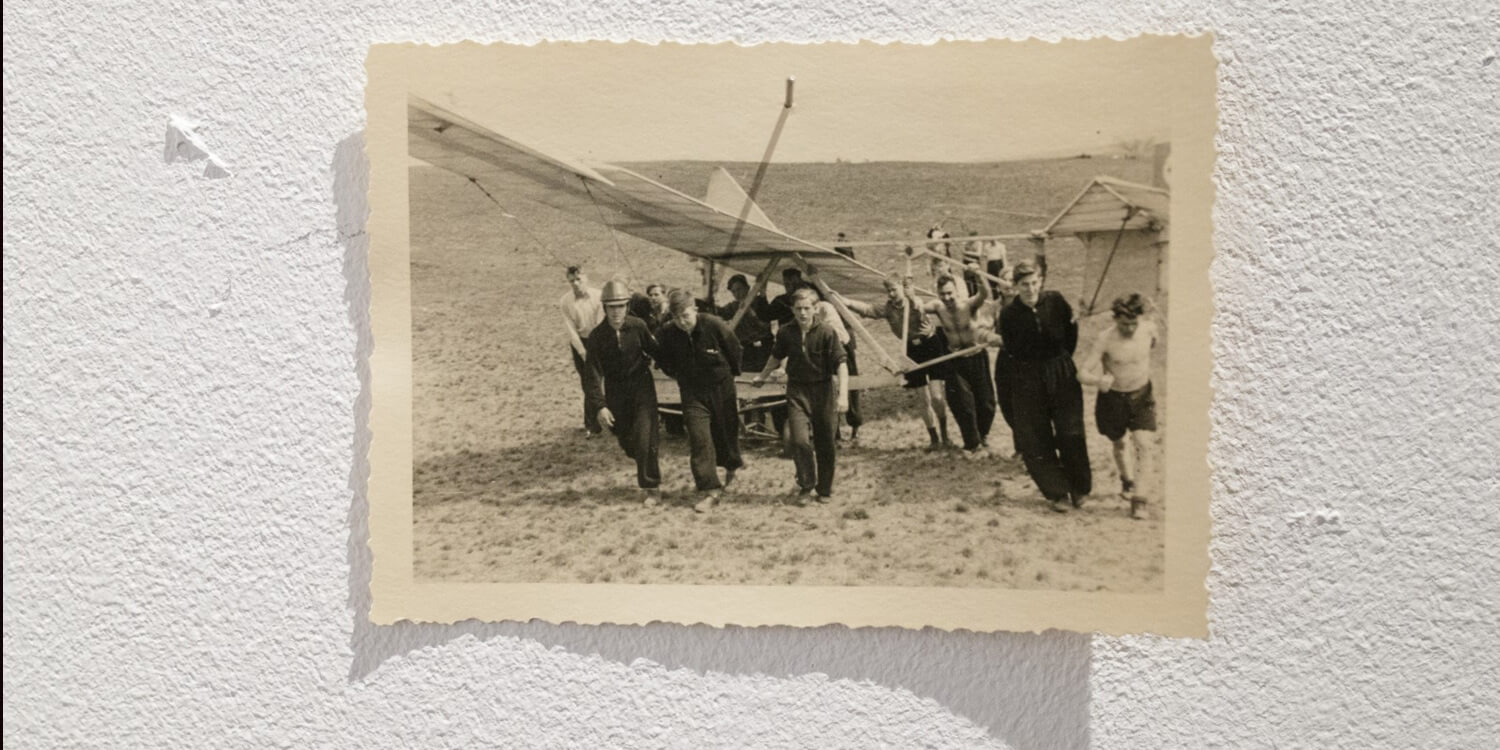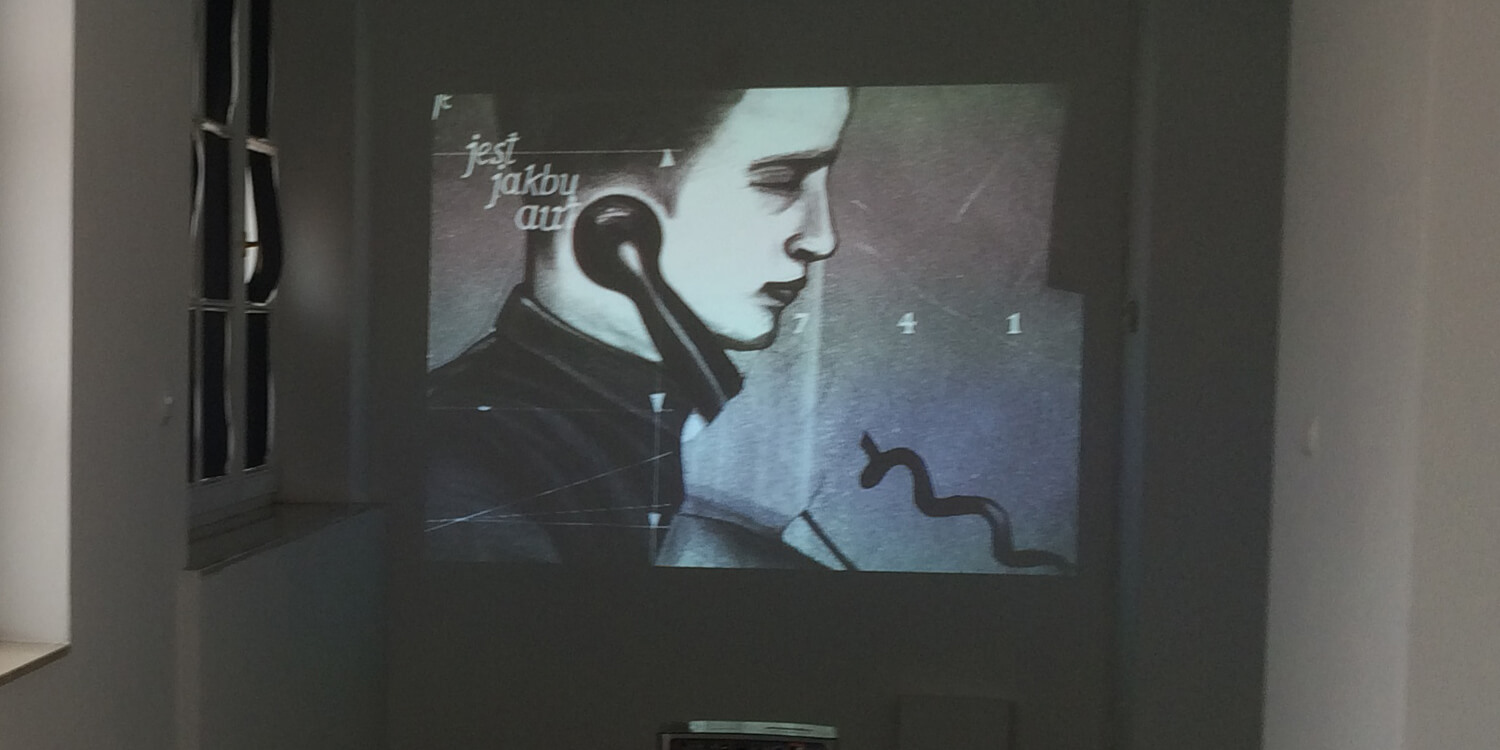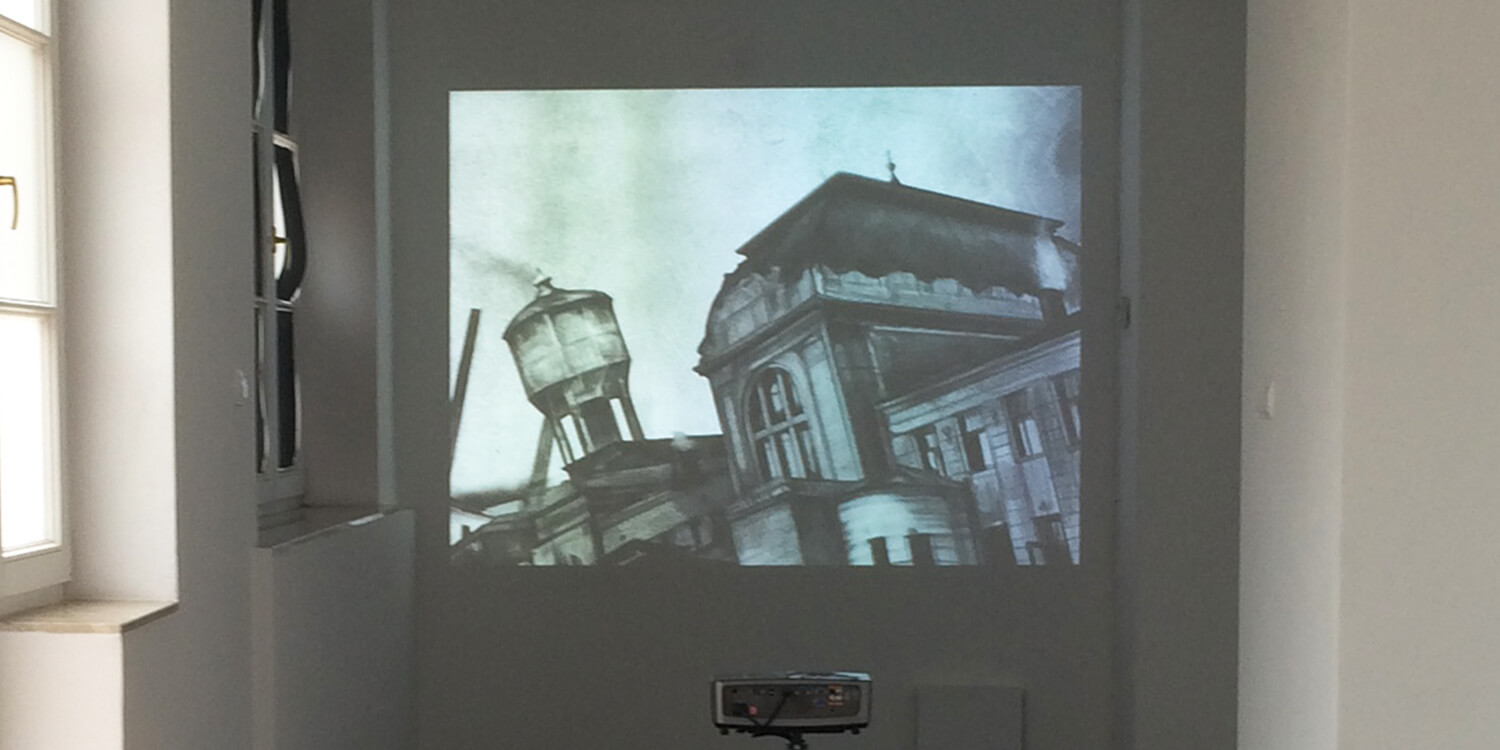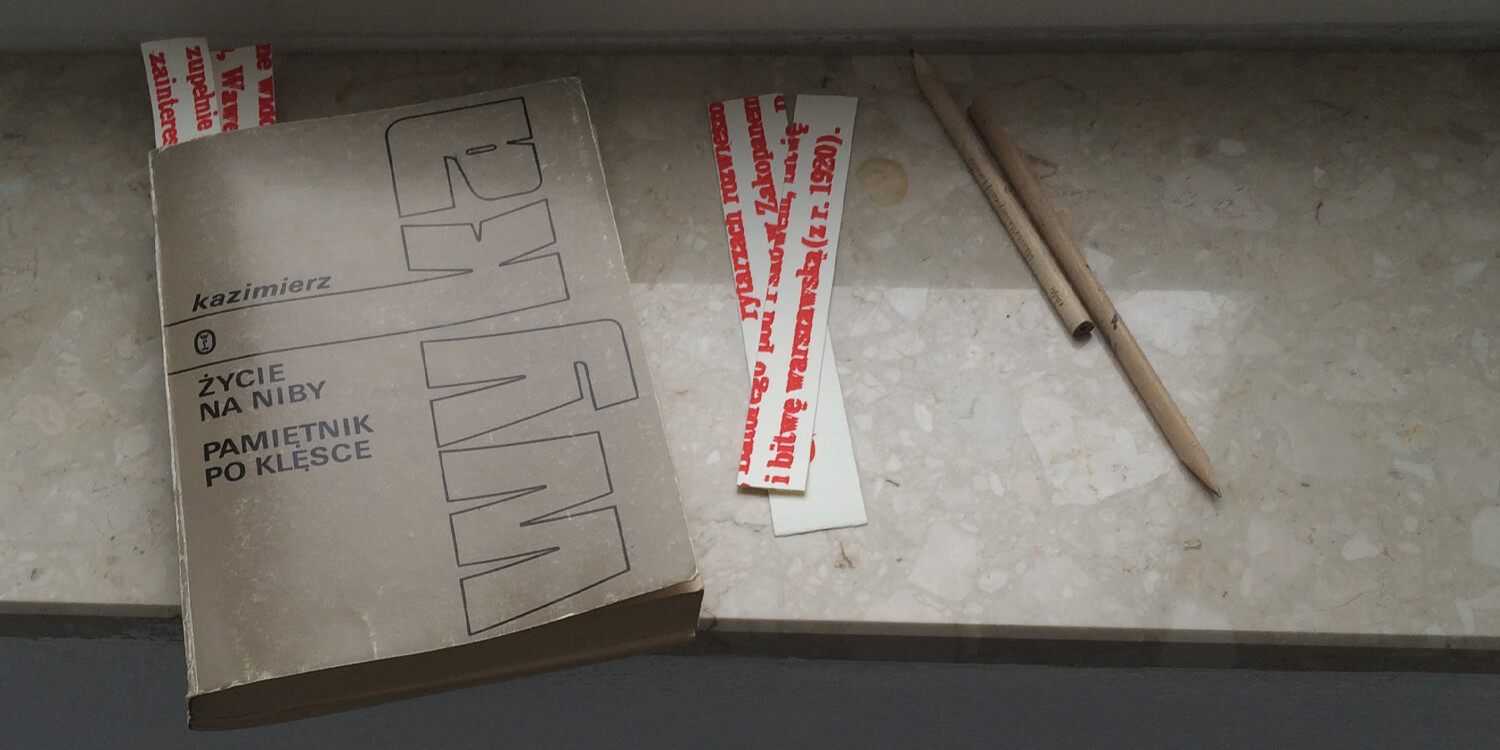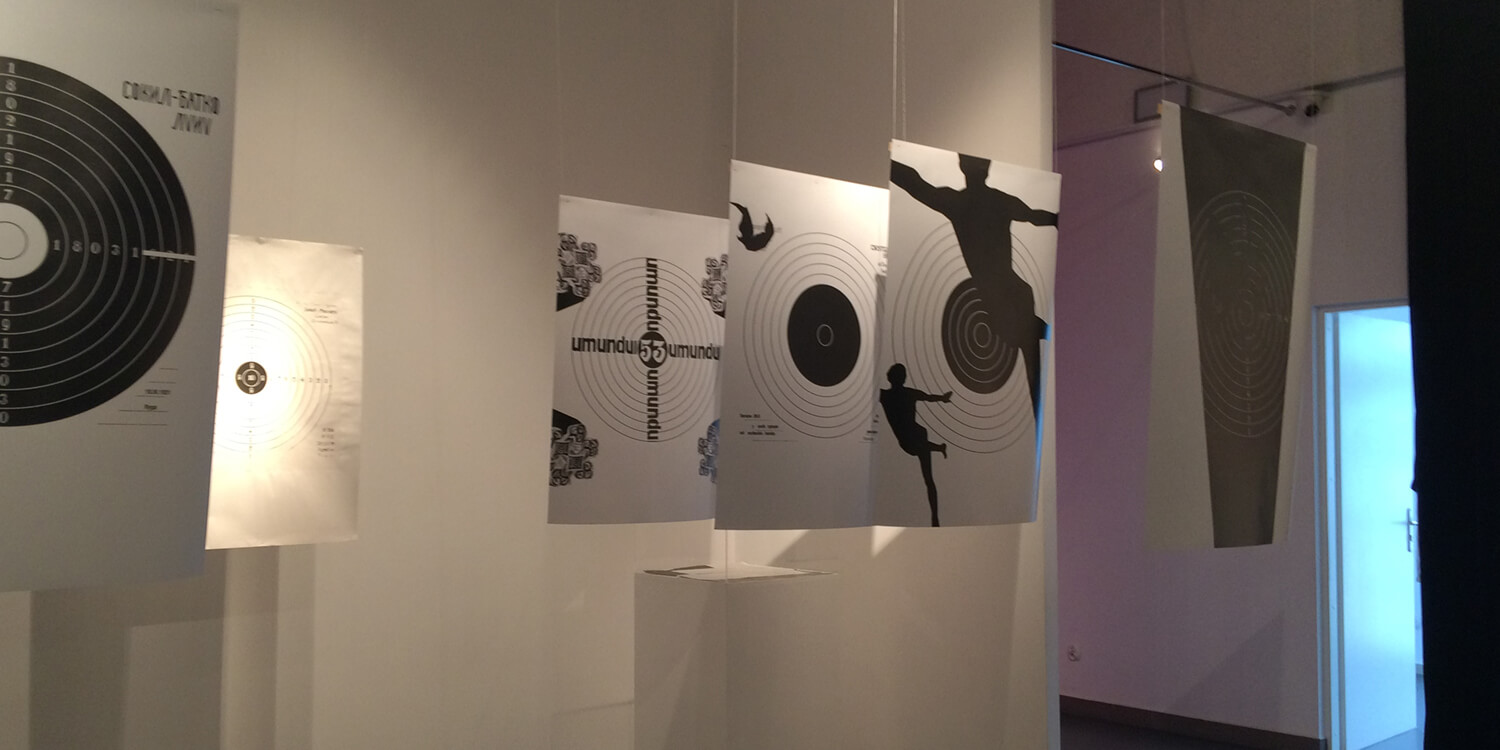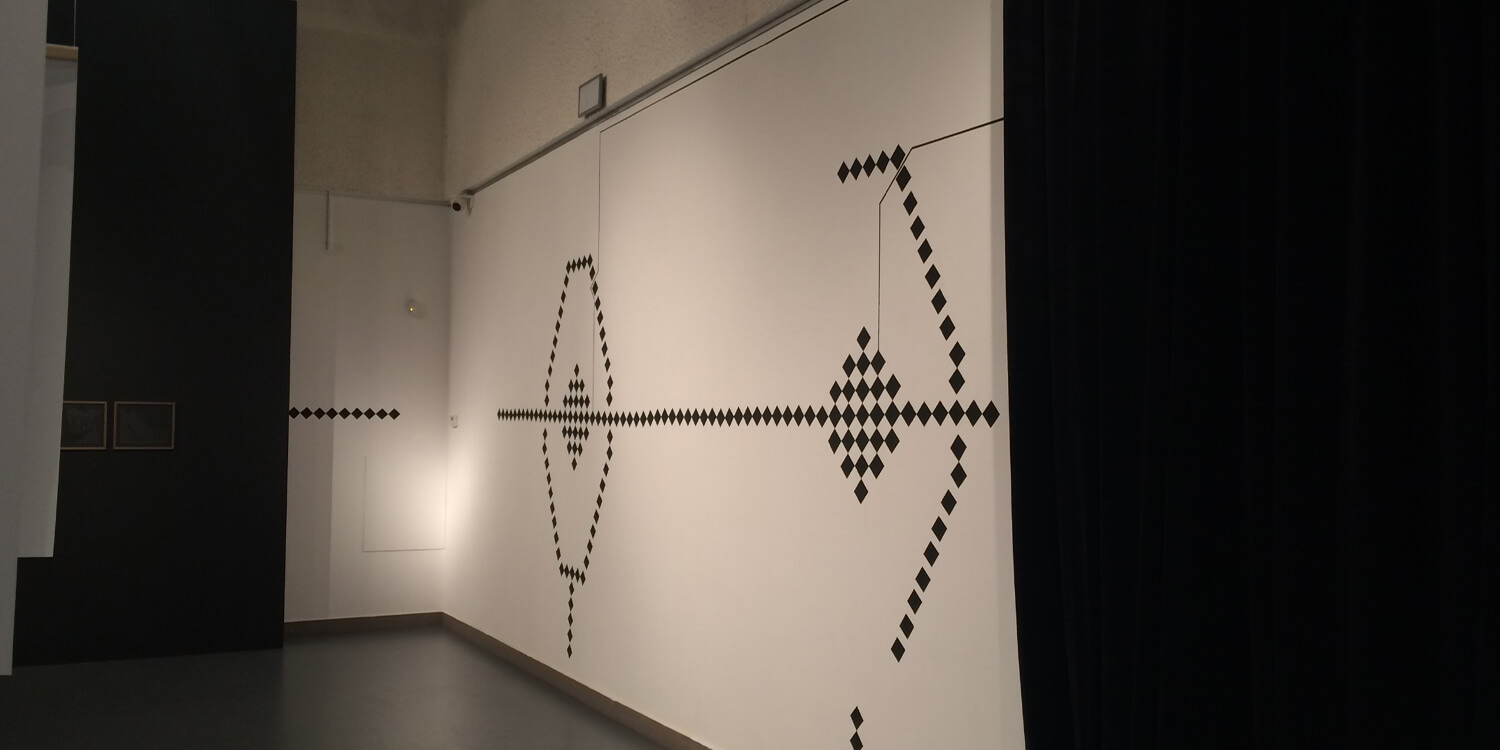Jest już dzień jasny (ordre de bataille)
Exhibition.
BWA Tarnów 2018
18.05-24.06.2018
At the centre of this exhibition is a concise report of a military unit's progression through southern Poland, including a breakthrough into Tarnów during the Polish defensive campaign in September 1939. The report was written by the artist’s grandfather, whom she never met.
Among other sources of inspiration is a military leader’s handbook, also authored by the artist’s grandfather (pre-war Polish Army officer of Ukrainian-German descent). Chapters provide practical advice including the correct ways of giving orders, punishing, and rewarding soldiers, the ways to manage and administer the collective. Texts emphasise the critical function of physical exercise in strengthening the body as well as the importance of the unity of the spirit.
The document ends just before the ensuing military catastrophe of the September Campaign. 79 years later the exhibition in Tarnów traces tensions between memory and forgetting, familiarity and estrangement. The works include moving image, screen-prints, poster printouts, mural and sound installation to visualise patterns of ideological disciplining of memory, imagination, and the personal as part of the collective body.
Special thanks to Ewa Łączyńska-Widz and Team from BWA Tarnów for helping me realise this project. Thanks also to Ewa Tatar and Ania Batko.
W centrum wystawy znajduje się krótki raport z walk jednego z batalionów, w okolicach Tarnowa we wrześniu 1939 roku. Autorem raportu jest dziadek Sławy Harasymowicz, którego artystka nigdy nie poznała.
Wśród źródeł inspiracji jest wojskowy podręcznik pracy dowódcy, także autorstwa dziadka artystki, oficera przedwojennej armii polskiej o korzeniach na pół-ukraińskich, na pół-niemieckich. Rozdziały zawierają praktyczne reguły zasad dowodzenia jak rozkazywanie, karanie i nagradzanie, podkreślając kluczową rolę ćwiczenia w wyrabianiu spójności duchowej, hartu ciała i ducha.
Raport urywa się tuż przed ostateczną katastrofą. 79 lat później wystawa w Tarnowie śledzi napięcia między pamięcią a zapominaniem, tym co było i tym, czego już nie będzie. Niejako w tle, projekcja wideo, grafika, mural i instalacja dźwiękowa nakreślają wzory ideologicznego dyscyplinowania pamięci, wyobraźni i jednostki jako elementu ciała zbiorowego.
Specjalne podziękowania dla Ewy Łączyńskiej-Widz i Zespołu BWA Tarnów za pomoc przy realizacji projektu. Dziękuję też Ewie Tatar i Ani Batko.
